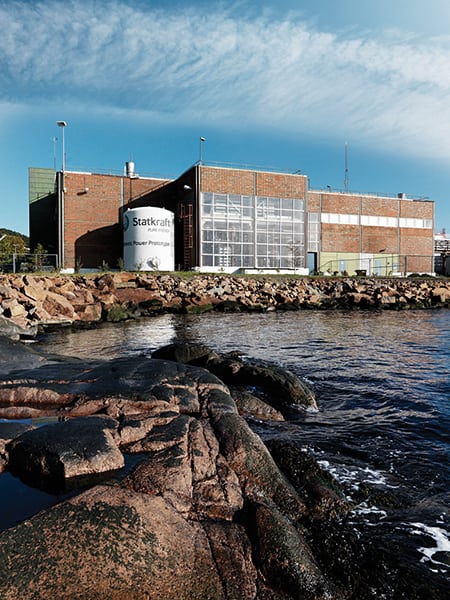Statkraft Shelves Osmotic Power Project
Norwegian power company Statkraft has shelved its much-watched effort to harness energy from pressure-retarded osmosis (PRO). It said in a rare industry admission that the technology could not be sufficiently developed within the current market outlook to become competitive “within the foreseeable future.”
The company has been working on osmotic power for more than a decade. After years of collaborative research and development with the Norwegian University of Science and Technology, Statkraft in 2009 started up one of the world’s first osmotic power plants at Tofte on the Oslo Fjord in Norway, a facility that produced 2 kW to 4 kW (Figure 4).
The prototype operated on the PRO process, which involves pumping seawater at 60% to 85% of the osmotic pressure against one side of semipermeable membranes whose other side is exposed to freshwater. When freshwater, compelled by osmosis, flows across the membranes, it dilutes the saltwater and increases its volume—and consequently, the pressure within the saltwater chamber. A turbine is spun as the pressure is compensated, driving a connected generator. PRO can be thought of as the reverse osmosis process (used for desalination and water treatment) running backward and producing power from the flow of saltwater.
As early as last September, Statkraft was reportedly assessing a location for a possible 1-MW to 2-MW pilot osmotic power facility. In December, however, the company declared it was discontinuing its efforts and leaving the technology development to “other players in the global market.”
“Our main challenge has been to make the technology efficient enough to achieve energy production costs on par with competing technologies,” said Statkraft department manager Stein Erik Skilhagen. “There are other technologies which have developed enormously in recent years. These are more competitive and relevant investments for us in the future,” he said.
Statkraft, which is Europe’s largest generator of renewable power, noted investor interest in osmotic power has been sluggish since the idea to exploit osmotic pressure for energy was conceived by a U.S. scientist in the 1970s. “A quarter of a century had to pass before market conditions made several independent public and private enterprises take up the idea and start developing the technology further,” it said.
Yet, the company stressed that it had proven that the technology, which it had substantially improved, “works.” It also said that the technology can be used in other applications such as the production of potable water. “We are now leaving the process of maturing the technology to others, as several independent public and private enterprises around the world are looking into this already,” Skilhagen said.
—Sonal Patel, associate editor (@POWERmagazine, @sonalcpatel)
